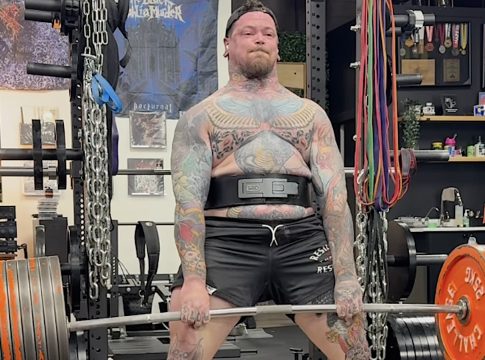Mastering the Deadlift: Four Essential Steps for Strength
Deadlifts are often referred to as the "king" of strength lifts, and for good reason. This powerful compound movement engages multiple muscle groups, making it a cornerstone of effective strength training. Recently, powerlifting expert Bryce Krawczyk of Calgary Barbell shared invaluable insights into perfecting the deadlift. Here’s a distilled guide featuring his four pivotal steps and some accessory exercises to bolster your lifting game.
Step 1: Shoulder Blades Over the Bar
A common pitfall for many lifters is positioning themselves too far behind the bar. This often leads to an inefficient lifting technique where the hips rise prematurely. To optimize your setup:
- Align Your Shoulders: Position your shoulder blades directly over the bar.
- Knees Above the Bar: Ensure your knees also sit over the bar to engage your quads effectively.
By refining your starting position, you set yourself up for success from the very first lift.
Step 2: Maintain Balanced Foot Pressure
Balance and stability play crucial roles in executing a proper deadlift. Leaning forward onto your toes or shifting back onto your heels can disrupt your leverage. Instead:
- Position the Bar over your midfoot, ideally right above your shoelaces. This creates a stable foundation for each lift.
Step 3: Focus on Hip Tension
Many lifters make the mistake of lowering their hips excessively before initiating the lift, which can lead to problems like hip rise and getting stuck. Here’s how to correct that:
- Create Hip Tension: Aim for a feeling of tightness and rigidity in your hips. This may require some individual experimentation based on your body mechanics.
Once you’ve established that tension, engage your upper body and pull yourself toward the bar.
Step 4: Fight Through the Initial Lift
The first pull from the floor is often the hardest part of the deadlift. Krawczyk advises:
- Commit to Your Starting Position: Embrace that initial struggle rather than instinctively raising your hips to find a different position. Staying committed secures better biomechanics and enhances your lift.
Accessory Exercises for Better Deadlifts
To further enhance your deadlift, consider integrating these accessory exercises into your routine:
- Pause Deadlifts: This variation has you pause just off the floor before completing the lift, which builds awareness and strength in the challenging range.
- Snatch Grip Deadlifts: Utilizing a wider grip can address hip rise and improve grip strength.
- Sumo Deadlifts: Great for enhancing quad engagement and bracing stability.
Supplemental Strength Builders
To complement your deadlift training:
- Leg Presses: To build quadriceps strength.
- Direct Core Work: Include exercises like weighted crunches.
- Heavy Back Work: Focus on heavy barbell or chest-supported rows to support proper posture and control.
Key Takeaways
Building a stronger deadlift isn’t just about lifting heavier; it’s about lifting smarter. By adjusting your setup, utilizing the right cues, and incorporating supportive exercises, you can achieve both immediate and long-term improvements in your lifting. Remember, every bit of progress counts, whether you’re a busy professional, fitness enthusiast, or just starting out.
So, gear up, keep these tips in mind, and watch your deadlift transform into a powerful asset in your strength training arsenal!

Covers wellness, nutrition, mental health, and daily life tips.
Bio: Talia brings a background in health journalism and holistic living to help readers live better, one tip at a time.

